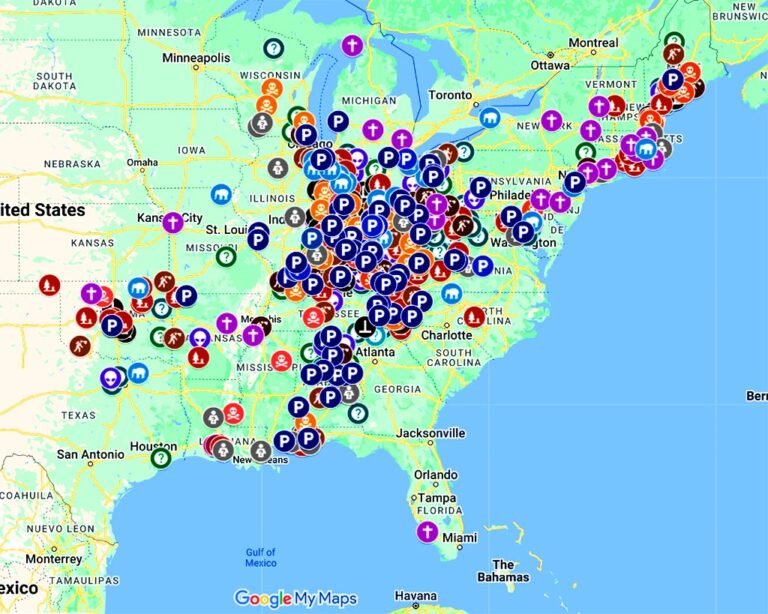What is Learned Helplessness?
Learned helplessness is a psychological condition where individuals develop a sense of powerlessness and hopelessness, often as a result of repeated exposure to uncontrollable and adverse situations. Over time, these individuals come to believe that no matter what actions they take, they are unable to change their circumstances. This belief can profoundly affect their mental health, motivation, and ability to engage with the world around them. First conceptualized by psychologists Martin Seligman and Steven Maier in the late 1960s, learned helplessness has since been linked to various mental health conditions, such as depression, anxiety, and chronic stress.
While originally studied in animals, learned helplessness has been shown to manifest in humans, especially in contexts where individuals feel trapped or overwhelmed by their circumstances—whether in personal relationships, the workplace, or societal structures. Understanding the underlying causes and identifying the signs of learned helplessness are crucial steps toward breaking free from its paralyzing effects.
This article explores the factors that contribute to learned helplessness, the harmful psychological and emotional outcomes it can create, and various methods to heal from this deeply ingrained sense of helplessness. It also emphasizes the importance of seeking professional help before the condition worsens.
Potential Causes of Learned Helplessness
Learned helplessness often develops when individuals repeatedly face situations where they perceive themselves to have no control, regardless of their efforts to change the outcome. Over time, they generalize this feeling of helplessness to other areas of their lives, even when they do have the ability to affect change. Here are some of the key causes of learned helplessness:
Repeated Exposure to Uncontrollable Events:
- Individuals who experience repeated failures or are placed in environments where their actions do not seem to influence outcomes begin to believe that nothing they do matters. This is common in situations of long-term unemployment, chronic illness, or abusive relationships, where circumstances seem unchangeable no matter what effort is made.
Childhood Neglect or Abuse:
- Children who grow up in abusive or neglectful environments may develop learned helplessness. If a child repeatedly finds that their needs are not met or that seeking help is futile, they may stop trying to assert themselves or ask for support. This early sense of powerlessness can carry into adulthood, shaping how they respond to challenges.
Overly Controlling Environments:
- Environments such as authoritarian households, workplaces with micromanagement, or educational systems that discourage autonomy can contribute to learned helplessness. When individuals are constantly told what to do or feel like their decisions are inconsequential, they may lose confidence in their ability to control outcomes in other areas of life.
Chronic Stress and Trauma:
- Prolonged exposure to stressful situations—whether it’s dealing with economic hardship, a toxic work environment, or a traumatic event—can erode an individual’s sense of agency. Chronic stress wears down a person’s ability to respond actively, pushing them toward resignation and helplessness.
Social and Cultural Conditioning:
- In some cases, societal norms or cultural expectations can instill feelings of helplessness. For example, marginalized communities who experience systemic discrimination may come to believe that no matter what they do, they will always face barriers, leading to a sense of helplessness.
Perceived Lack of Support:
- A lack of emotional, social, or practical support can deepen learned helplessness. When individuals feel isolated or unable to rely on others for help, they may resign themselves to their circumstances, believing that they must suffer alone and that there’s no way out.
Low Self-Efficacy:
- People with low self-efficacy, or a lack of belief in their own ability to succeed, are more prone to learned helplessness. Even when they have the skills or resources to solve problems, their doubt in their abilities can prevent them from taking action.
Chief Indicators of Learned Helplessness
Recognizing the signs of learned helplessness is crucial for breaking free from its grip. Below are the primary indicators that someone may be experiencing learned helplessness:
Passive Behavior:
- Individuals stop trying to improve their situation, even when opportunities for change exist. They may show apathy, withdraw from challenges, or fail to engage in problem-solving. This passive response stems from the belief that their efforts won’t make a difference.
Loss of Motivation:
- A person with learned helplessness often feels unmotivated to pursue goals or face new challenges. They may have previously been ambitious or proactive but now lack the drive to even attempt to make changes, fearing failure or expecting the same negative outcomes.
Negative Self-Talk:
- Recurrent patterns of negative thinking often accompany learned helplessness. Phrases like “Why bother?”, “I can’t do anything right,” or “Nothing ever works out for me” become ingrained. This self-defeating mindset reinforces the belief that they are powerless to alter their circumstances.
Low Self-Esteem:
- Individuals with learned helplessness frequently struggle with feelings of worthlessness or inadequacy. They may view themselves as inherently incapable of achieving success or happiness, which fuels their reluctance to take action.
Avoidance Behavior:
- People with learned helplessness tend to avoid situations that may require them to take responsibility or make decisions. They may shy away from tasks, opportunities, or relationships that could potentially challenge their sense of helplessness.
Resignation to Negative Situations:
- A hallmark of learned helplessness is the belief that there’s no point in resisting or fighting against adversity. Individuals may stay in toxic relationships, endure poor work conditions, or tolerate unhealthy living situations without attempting to improve them because they believe nothing can change.
Increased Anxiety or Depression:
- Over time, learned helplessness can contribute to the development of anxiety, depression, and other mental health issues. The ongoing sense of powerlessness leads to feelings of despair, hopelessness, and fear about the future, further perpetuating the cycle of helplessness.
Psychological Harms and Emotional Consequences of Learned Helplessness
Learned helplessness can have devastating effects on an individual’s psychological and emotional well-being. If left unaddressed, it can lead to long-term mental health challenges, damaging both personal relationships and career prospects.
Depression:
- One of the most well-documented outcomes of learned helplessness is depression. The persistent belief that one’s actions have no impact on their circumstances can create feelings of hopelessness and despair. Over time, this hopelessness can become internalized, leading to chronic depressive symptoms such as fatigue, loss of interest, and persistent sadness.
Anxiety Disorders:
- Individuals with learned helplessness may also develop anxiety disorders, particularly generalized anxiety disorder (GAD) or social anxiety. Their fear of making mistakes or encountering uncontrollable situations can make everyday life feel overwhelming and unmanageable.
Increased Risk of Substance Abuse:
- Some individuals may turn to alcohol, drugs, or other addictive behaviors as a way to cope with feelings of helplessness. Substance abuse offers a temporary escape from the overwhelming emotions that accompany learned helplessness but ultimately exacerbates the problem.
Stunted Personal and Professional Growth:
- People who feel helpless may avoid pursuing personal or career goals. They might turn down promotions, avoid starting new projects, or disengage from personal development opportunities, believing that any effort will ultimately lead to failure.
Relationship Difficulties:
- Learned helplessness can put significant strain on personal relationships. Individuals may become overly dependent on others to make decisions or take control, leading to imbalanced dynamics. They might also tolerate abusive or unhealthy relationships, believing that they have no way out or that they deserve the mistreatment.
Physical Health Issues:
- The chronic stress and emotional toll of learned helplessness can contribute to physical health problems, such as high blood pressure, heart disease, or a weakened immune system. The body’s stress response is constantly activated, leading to long-term health deterioration.
The Road to Recovery
Overcoming learned helplessness involves rebuilding confidence, regaining a sense of agency, and addressing the underlying psychological factors that contribute to the condition. Below are several healing strategies, including the importance of seeking professional help before it’s too late.
Recognize the Problem:
- Why It Helps: The first step in healing is acknowledging that learned helplessness exists. Without awareness, it’s impossible to take the necessary steps to break free.
- How to Do It: Reflect on areas of your life where you feel stuck or powerless. Ask yourself if you’ve been avoiding taking action because you believe it won’t matter. Once you recognize these patterns, you can begin to challenge them.
Set Small, Achievable Goals:
- Why It Helps: Setting and accomplishing small, manageable goals can rebuild a sense of control and competence, helping to counteract feelings of helplessness.
- How to Do It: Start by identifying small, low-risk tasks that you can accomplish. This could be something as simple as organizing a space in your home or completing a short work task. Each small success will reinforce your belief in your ability to effect change.
Challenge Negative Thoughts:
- Why It Helps: Learned helplessness is often perpetuated by a cycle of negative thinking. By challenging these thoughts, individuals can begin to reframe their mindset.
- How to Do It: When negative self-talk arises (e.g., “I’ll never succeed”), consciously challenge it by asking yourself if the thought is accurate or if you’re assuming the worst. Replace the negative thought with a more balanced one, such as, “I have succeeded in the past, and I can try again.”
Build a Support Network:
- Why It Helps: Connecting with supportive individuals can provide encouragement, feedback, and new perspectives, helping to counteract feelings of isolation.
- How to Do It: Reach out to friends, family, or support groups. Sharing your feelings and experiences can reduce the burden and help you feel less alone in your struggles. Positive relationships can offer reassurance that change is possible.
Practice Self-Compassion:
- Why It Helps: Being kind to yourself during difficult times can alleviate the weight of shame and guilt that often accompany learned helplessness.
- How to Do It: Treat yourself with the same compassion you would offer a friend facing challenges. Acknowledge that everyone struggles at times, and it’s okay to seek help and take small steps toward improvement.
Engage in Problem-Solving Activities:
- Why It Helps: Actively engaging in problem-solving can empower individuals to take control and recognize their capacity to effect change.
- How to Do It: Approach challenges with a problem-solving mindset. Write down problems you’re facing and brainstorm potential solutions. Even if you don’t find the perfect answer, the process of thinking through solutions can help rebuild a sense of agency.
Seek Professional Help:
- Why It Helps: If learned helplessness is significantly impacting your mental health, seeking professional help is vital for long-term recovery.
- How to Do It: A mental health professional, such as a psychologist or therapist, can provide support and teach coping strategies tailored to your situation. Cognitive-behavioral therapy (CBT) is particularly effective for addressing learned helplessness by helping individuals identify and challenge distorted thought patterns.
Develop a Growth Mindset:
- Why It Helps: Embracing a growth mindset—the belief that abilities can be developed through dedication and hard work—can counteract feelings of helplessness.
- How to Do It: Focus on learning from experiences rather than fearing failure. Recognize that setbacks are part of growth and an opportunity to gain new skills or insights. This perspective fosters resilience and encourages active engagement in life.
Practice Mindfulness and Stress Reduction:
- Why It Helps: Mindfulness practices can help individuals manage anxiety and cultivate a greater sense of control over their thoughts and emotions.
- How to Do It: Engage in mindfulness meditation, yoga, or deep-breathing exercises. These practices promote relaxation and self-awareness, allowing individuals to observe their thoughts without judgment and reduce feelings of helplessness.
Take Action Before It’s Too Late:
- Why It Helps: Prolonged feelings of helplessness can lead to severe emotional distress and mental health decline. Taking proactive steps can prevent these consequences.
- How to Do It: If you recognize that feelings of helplessness are interfering with your daily life or mental health, don’t hesitate to seek help. Early intervention can provide the necessary tools and support to address the issue before it escalates.
What Next?
Learned helplessness is a complex and debilitating condition that can have profound impacts on an individual’s mental health and overall quality of life. Rooted in a combination of environmental factors, psychological conditioning, and negative self-perceptions, it can lead to chronic anxiety, depression, and feelings of isolation. However, through recognition, self-compassion, and the implementation of effective coping strategies, individuals can reclaim their sense of agency and rebuild their confidence. Seeking professional support is essential, especially if learned helplessness is deeply entrenched. With the right tools and mindset, it is possible to break free from the cycle of helplessness and create a more empowered, fulfilling life.





















+ There are no comments
Add yours